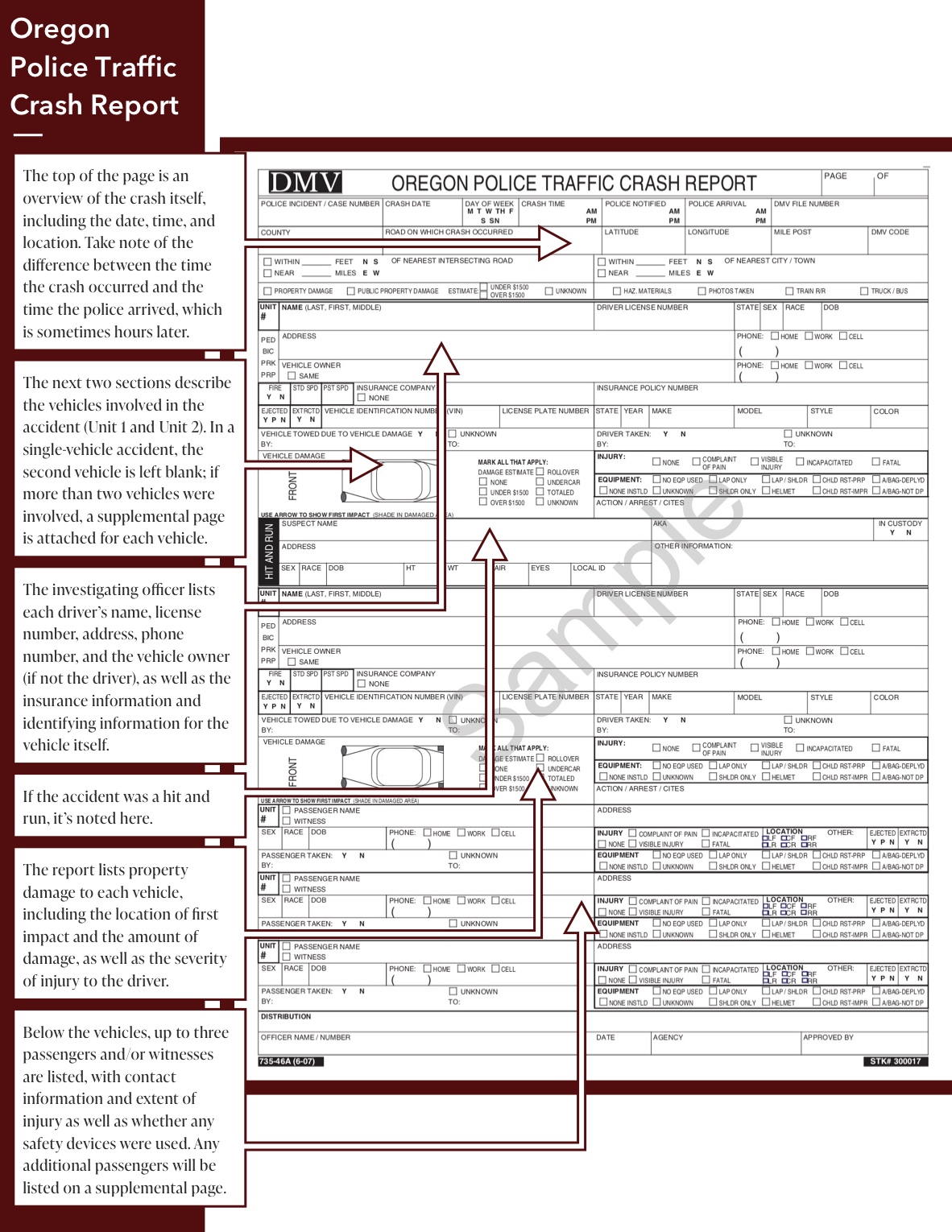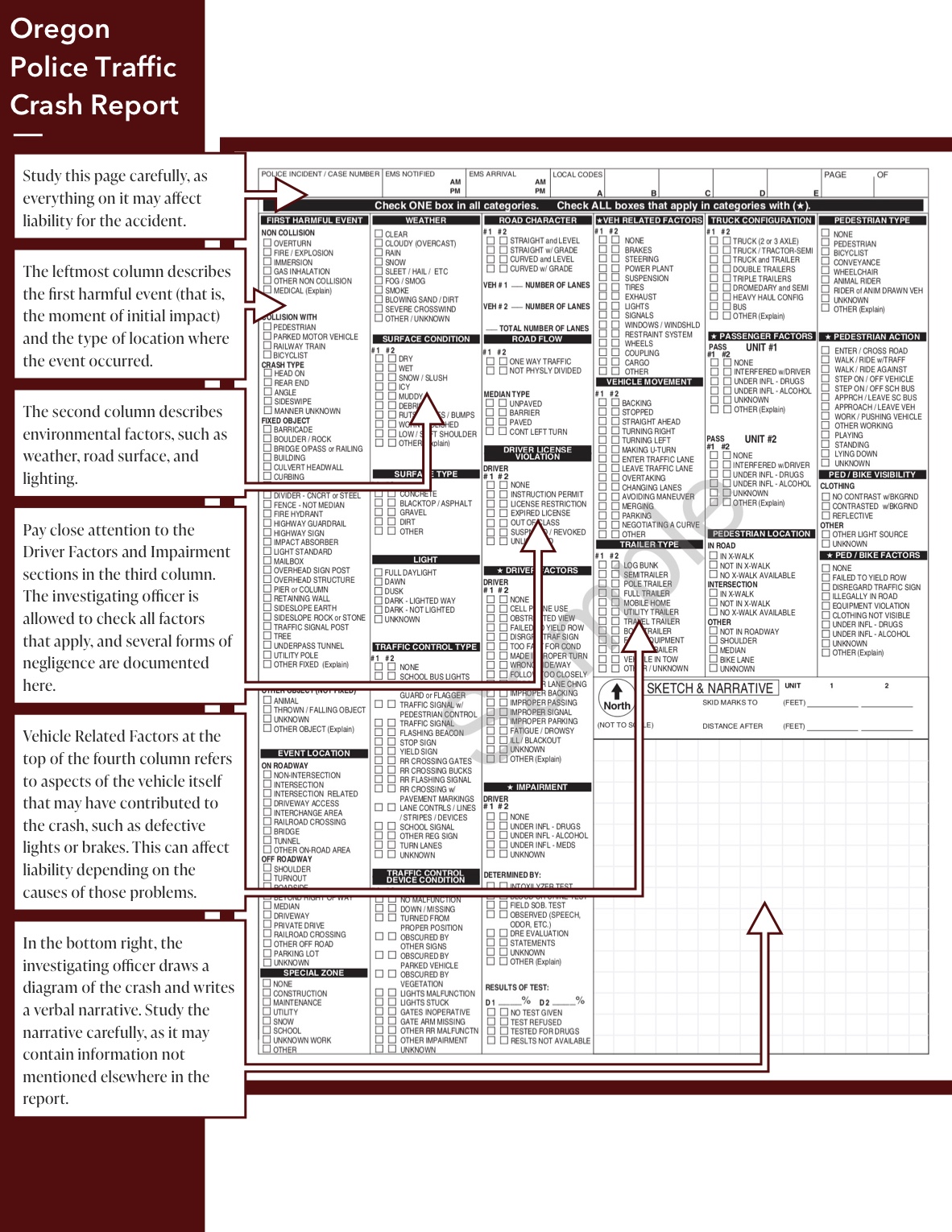In a divorce, the laws of equitable distribution distinguish marital property from separate property. Technically, only marital property, that is, proper...
After a car accident in Oregon, the Oregon Police Traffic Crash Report filled out by the investigating officer becomes a key piece of evidence in the insurance claim and, if necessary, any litigation that follows. Insurance companies review this report to assign fault for the accident. If the investigating officer is required to testify, which may be months or years later, that testimony will likely be based on the report.
Knowing what your report says is an important part of knowing your case’s prognosis. Here’s how to read it.
Oregon Police Traffic Crash Report
https://www.nhtsa.gov/sites/nhtsa.dot.gov/files/documents/or_par_46ab_rev6_2007.pdf

Page 1
The top of the page is an overview of the crash itself, including the date, time, and location. Take note of the difference between the time the crash occurred and the time the police arrived, which is sometimes hours later.
Click here to download a printable PDF of How to Read Your Oregon Car Accident Report.
The next two sections describe the vehicles involved in the accident (Unit 1 and Unit 2). In a single-vehicle accident, the second vehicle is left blank; if more than two vehicles were involved, a supplemental page is attached for each vehicle.
The investigating officer lists each driver’s name, license number, address, phone number, and the vehicle owner (if not the driver), as well as the insurance information and identifying information for the vehicle itself.
If the accident was a hit and run, it’s noted here.
The report lists property damage to each vehicle, including the location of first impact and the amount of damage, as well as the severity of injury to the driver.
Below the vehicles, up to three passengers and/or witnesses are listed, with contact information and extent of injury, as well as whether any safety devices were used. Any additional passengers will be listed on a supplemental page.

Page 2
Study this page carefully, as everything on it may affect liability for the accident.
The leftmost column describes the first harmful event (that is, the moment of initial impact) and the type of location where the event occurred.
The second column describes environmental factors, such as weather, road surface, and lighting.
Pay close attention to the Driver Factors and Impairment sections in the third column. The investigating officer can check all factors that apply, and several forms of negligence are documented here.
Vehicle Related Factors at the top of the fourth column refers to aspects of the vehicle itself that may have contributed to the crash, such as defective lights or brakes. This can affect liability, depending on the causes of those problems.
In the bottom right, the investigating officer draws a diagram of the crash and writes a verbal narrative. Study the narrative carefully, as it may contain information not mentioned elsewhere in the report.





